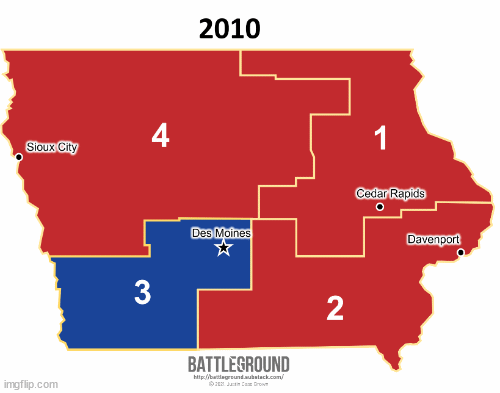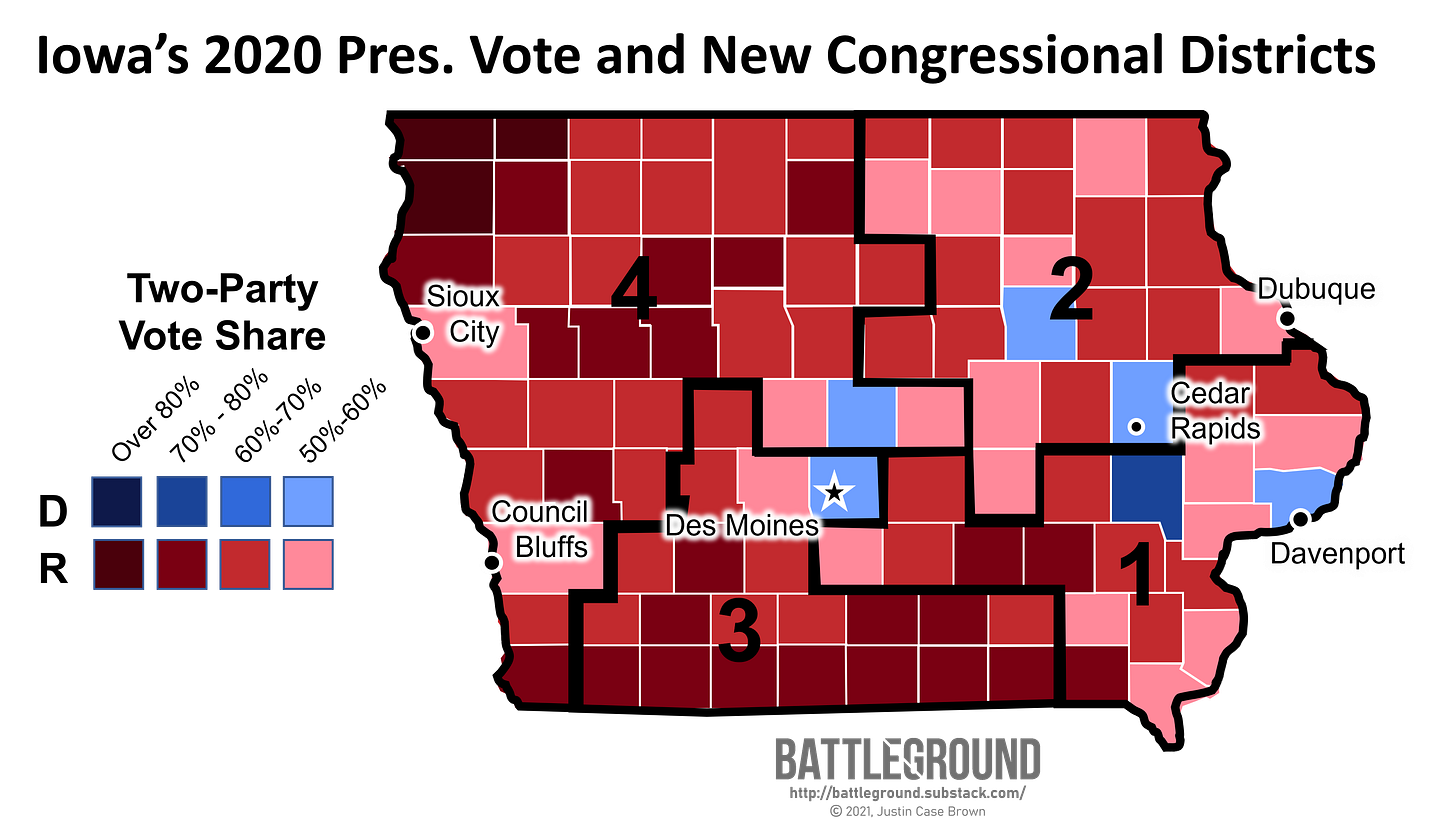Iowa: Republicans Play Defense
New districts aim to prevent Democrats from making inroads in Iowa.

Topline Takeaways
Republicans are in complete control of Iowa’s redistricting process this cycle as they control both houses of the legisle alongside a Republican governor.
The new boundaries don’t change the partisan makeup of districts too drastically, no district shifts more than two points in either party’s favor.
Iowa is a strong example of Republicans’ defensive approach to redistricting. They opted to maintain the status quo rather than jeopardizing swing districts for the sake of making Republican districts even safer.
Who’s In Control
Iowa’s redistricting process is completely controlled by the state legislature and requires gubernatorial approval before being adopted. Republicans are firmly in the drivers seat here as they hold a trifecta: majorities in both houses alongside a Republican governor. The maps were drawn by the state’s nonpartisan Legislative Services Agency and were approved by the legislature in October. Iowa Governor Kim Reynolds signed the new maps into law on November 4, 2021.
New District Breakdown
Iowa’s counties are on a grid with most counties being a 24 by 24 miles square. (It’s said that land surveyors settled on this size so that any resident of the county could travel to and from the county seat in one day when traveling by horse drawn carriage.) This relatively even grid makes it much easier for mapmakers to engage in legal forms of partisan gerrymandering as county lines don’t conform neatly to the geography of human settlement. For example, much of Des Moines’ southern suburbs stretch into Warren county. Mapmakers chose to divorce this Democratic leaning constituency from the rest of Des Moines in IA-3 and instead group it into the southeastern IA-1. They are able to do this legally because the district lines follow pre-established county boundaries. This same tactic was used to separate Cedar Rapids from the deeply Democratic University of Iowa barely 25 miles south. Splitting the two neighboring counties across two districts is the only way to prevent a Democratic leaning district on the eastern side of the state. Under this option, both IA-1 and IA-2 stay slightly favorable for Republicans.
While the geographic boundaries of the districts follow the letter of the law, the result is still expected to disproportionately favor Republicans. In the 2020 U.S. House elections, 46% of Iowans voted for Democratic House candidates but this only resulted in a single Democratic representative. The new map would replicate similar patterns and keeps the door open to a complete shutout of the Democratic party in Iowa.




